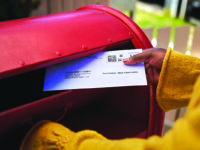High resolution satellite data were used to make a credible estimate of the number of brick kilns across the ‘Brick Belt’, helping to calculate the scale of modern slavery present. Brick kilns are high slavery-prevalent industries and before this work, the full scale of brick kilns and by proxy, slavery, was unknown, making action from the appropriate agencies difficult. This innovation provides data to help NGOs and governments fight modern slavery. This approach scales in time and space.
Innovation Tag: Methods and Tools
The Lab is an all-of-government neutral space enabling agencies to collaboratively innovate to make it easier for people to access government services. It's a design & development lab to experiment, drive and enable the systemic change of government for the benefit of society. We are providing a way to direct public funding to systemic improvements, horizontal efforts around shared goals, capability uplift, high value reusable components and actionable innovation for all participating agencies.
This programme was developed to address critical strategic challenges in the Criminal Justice Sector in Ireland so as to enhance sectoral leadership and public value. A cross agency collaborative learning and implementation methodology was used. High profile reviews of deep seated cultural and procedural challenges have inspired this programme. The IPA and agencies across the criminal justice system have taken an innovative approach to collaboration, learning and implementation. .
Highway Interchanges are often highly congested. Solving it with traditional measures is costly. With the first Diverging Diamond Interchange (DDI) in Europe, road users change lanes when passing over the highway with fewer conflict points, enabling more capacity, improved safety and less congestion. The Danish DDI has a high return on investment. It was brought to life by an open innovation collaboration between the Danish Road Directorate and the Missouri Department of Transportation.
Many years of Australian debate and public division around same sex marriage culminated in a single, nation-wide postal survey. The Australian Bureau of Statistics was given only 99 days to prepare, conduct and release the results of a survey of Australia’s 16 million enrolled voters. An amazing 80% of citizens participated in this voluntary survey, enabled by innovative project management and customer-centric service delivery. The project was delivered for 2/3 of its budget, a $40m saving.
Coming Soon fosters small & medium business creation across Jerusalem through an innovative means of connecting entrepreneurs with the real needs of the residents. Through innovative crowd-sourcing platform, we asks vast numbers of Jerusalemites what businesses are missing in their neighborhoods. This data is then shared with entrepreneurs, who receive a package of government-subsidized training and incentives to help them build a sustainable businesses based on what Jerusalemites actually…
Paseo Bandera is a street in the heart of Santiago that for 5 years was closed for work on the construction of the Santiago new subway line. Because of the closure, it was used for parking and passage of cars all day, being one of the worst streets in terms of quality in the center of the capital. In 2017, it was authorized for 10 months to be pedestrian. With artistic and technological innovation was possible to improve the quality of public space, accessibility, environment and mobility.
A customer-friendly emergency service model from Finland where the public can find all the assistance they need at one point of service, instead of across several sites. In addition to somatic emergency services, psychiatry, substance abuse and violence prevention, crisis and social work, and child protection are available. The interprofessional model means collaboration towards a shared goal. The operational model, available anywhere in the world, improves emergency services.
The Model Hospital allows trusts across the NHS in England to benchmark their productivity and identify areas to improve across the range of services they delive. For the first time, it provides data on productivity, performance and quality in the same place,
highlighting opportunities to improve productivity and reduce variation. The Model Hospital leverages the power of benchmarking to provide concise, insightful, actionable strategic information to support trusts to improve care for patients.
Social innovations offer many new solutions to today’s challenges. Yet, they encounter difficulties in becoming known. Social innovation Crossroad offers a precise vision of social innovations in France. To do so, a search engine gives access to 5000 projects already capitalized by 50 actors. Financers, coaches, academics and projects holders now get reliable information, automatically up-to-date and enter a new community. Small as well as big projects are highlighted the same way.




